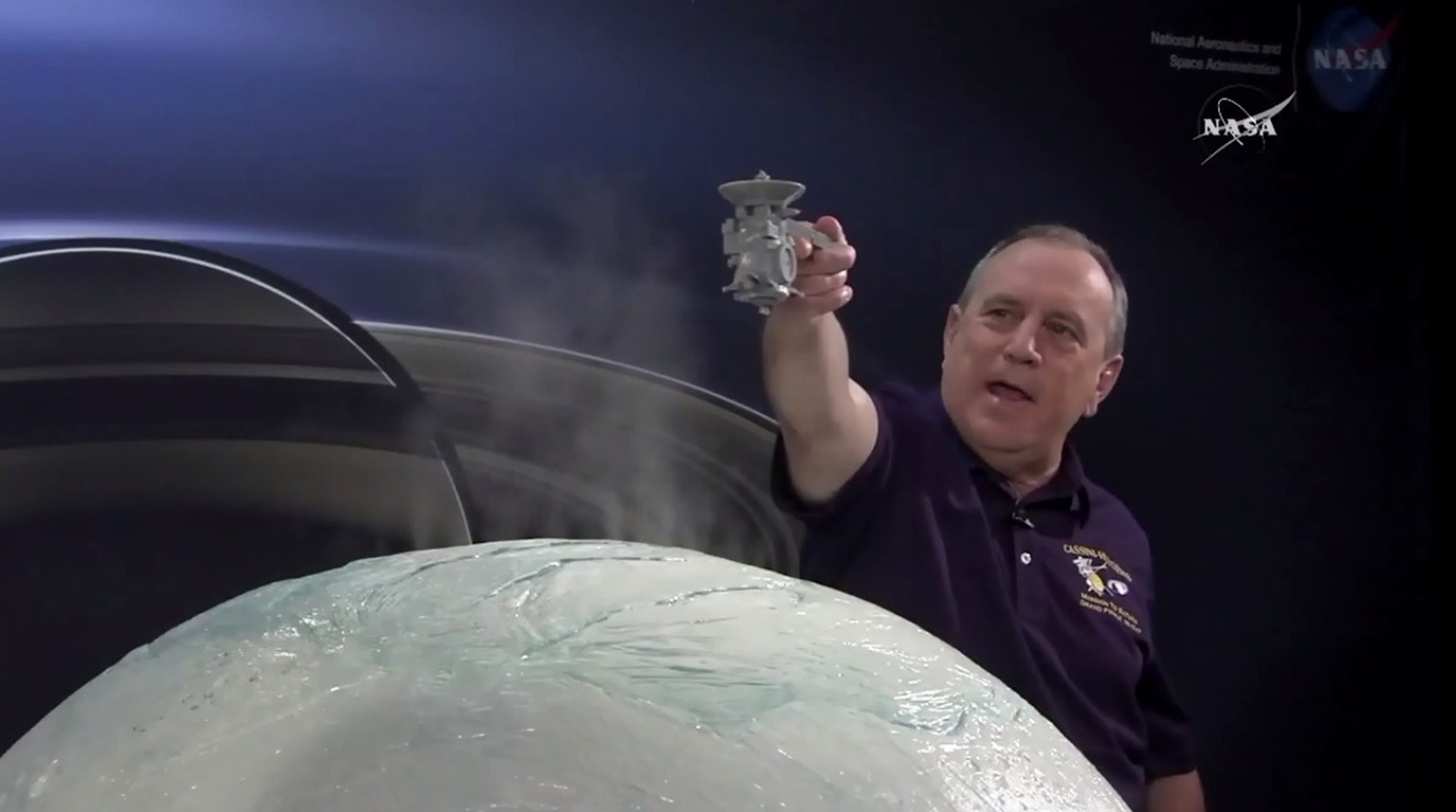
Saturn’s moon Enceladus is one of the places in the solar system where life is worth searching in the first place. So scientists from the mission team Cassini of NASA believe. Within the framework of this mission, an interplanetary probe was launched into space, which arrived in Saturn in 2004. The device was launched in 1997 and spent the last decade studying this planet and its satellites. Now he is completing his work. Cassini helped to detect hydrothermal sources on the bottom of the planetoid, which are quite capable of supporting life, even if the simplest, for example, microorganisms. On Earth such sources are called “black smokers”, in different regions of the World Ocean they provide quite comfortable existence of the inhabitants of the near-bottom regions.
It is worth noting that the scientists quite quickly study Enceladus. Just a couple of years ago it was proved that there is a subglacial ocean on the planetoid. And now scientists are gradually learning about the physico-chemical properties of this ocean. Earlier it was shown that on Enceladus there are regular discharges of liquid into the surrounding space.
According to geological measures, Enceladus has a young surface. The satellite revolves around Saturn in an elliptical orbit, which, according to scientists, leads to a permanent deformation of the planetoid. It also serves as a source of heat, which heats the ocean. According to experts, the depth of this ocean can be about 60 kilometers, and under it – a stone core. At the bottom, the water temperature can reach 90 ° C. Liquid water and heat are the basic factors that contribute to the emergence of life and its maintenance. In any case, this is the opinion of modern science.
As for cryovolcans, they were first discovered on Enceladus in 2005. Then Cassini just transferred the satellite images of Saturn to Earth. Since then, scientists have repeatedly observed the release of steam and ice from the cracks in the ice shell of Enceladus.

In 2005, Cassini received images of Enceladus of high resolution. After analyzing the images, it became clear that the icy crust was covered with cracks and craters. This image was obtained as a result of combining 21 photos of Enceladus. Colors do not correspond to reality
In 2015, the device flew five times over the surface of Enceladus, diving through the fountains of steam in order to collect the necessary data on its composition. To carry out this work, the probe has everything you need, including an INMS spectrometer. Chemical analysis showed that the composition of the jets contains organic and nitrogen-containing molecules, there are silicates and other chemical compounds. This, according to experts, is a direct evidence of the ocean’s contact with the solid rock – the bottom.
After analyzing the data transmitted by the probe, scientists learned that the water of the Enceladus ocean is quite high in molecular hydrogen. The representatives of the mission Cassini told about this at a special conference devoted to the discoveries on Enceladus. Molecular hydrogen can form as a result of the interaction of hot water with rocks. “Now we are close to finding the place with the maximum combination of ingredients necessary to sustain life,” said one of the conference participants.
One of the factors that can be decisive is the presence of molecular hydrogen, as discussed above. Microorganisms are able to use hydrogen to react with water-dissolved carbon dioxide to produce methane as the final product. And already methane microbes can be used as an energy source.

One of the frames from the NASA conference
It’s amazing, but it’s Enceladus – a small planetoid, Completely covered with ice and far from the Sun millions of kilometers away, has everything necessary for the existence of life. It is still unclear whether there are sulfur and phosphorus in the ocean water of Enceladus, which are also needed by microorganisms. But scientists believe that this is likely, because the bottom rocks may well contain these two elements.
“Confirming that the chemical energy necessary for the existence of life is available in the ocean of the small moon of Saturn is an important milestone in the search for inhabited worlds outside the Earth,” said Linda Speelker, representative of the Cassini team.
It’s too early to talk about the existence of life on Enceladus. But scientists now have the confidence that such an ocean, which exists under the ice of Saturn’s moon, can very well support life. By the way, similar conditions can exist on the satellite of Jupiter Europe.
NASA may now reconsider its plans. Earlier the agency planned to begin the mission of sending an automatic station to Europe, but maybe now such a station (which has not even begun to develop) will fly to Enceladus.








